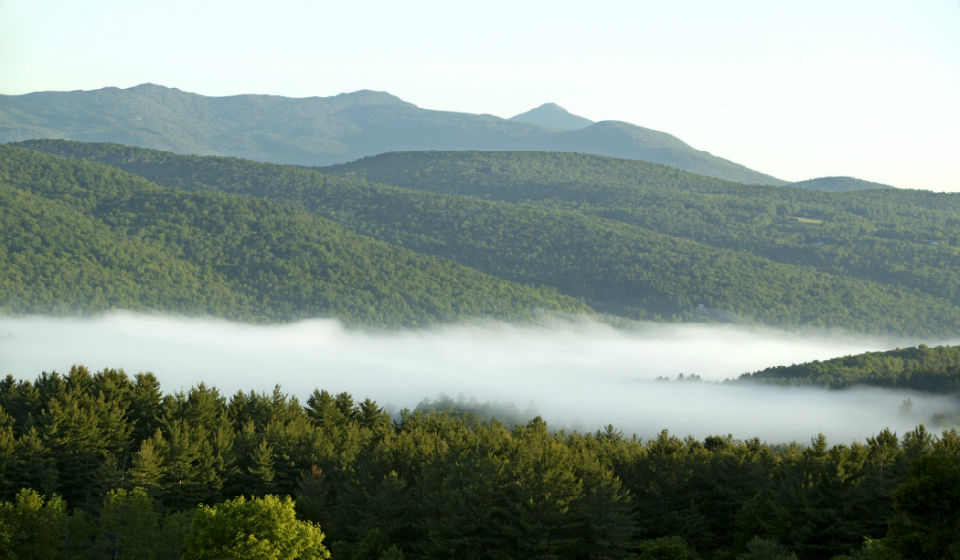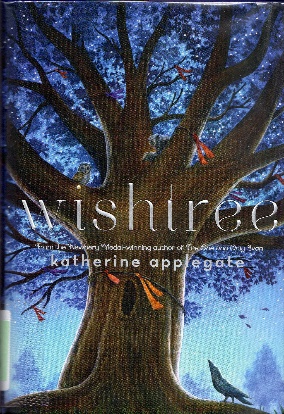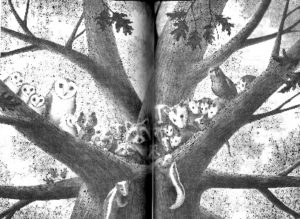Book Review: Wishtree
Author:Allen Yale | Organization:Tree Farmer and Committee Member | Date:September 1, 2018Wishtree by Katherine Applegate
Having just received my VWA newsletter, I was sitting on my front porch relaxing and reading the very excellent issue. I was thinking about what book I should review for the next issue, when my wife asked: “What is a red oak tree?” I looked across my driveway to the massive tree on the front lawn and said: “That is a red oak tree. Why?” She was sitting next to me reading Wishtree by Katherine Applegate. My wife Kathleen is a former school librarian and reading juvenile literature is one of her passions, especially Newberry Medal winners and Dorothy Canfield Fisher winners. She gave me a synopsis of the story. I said: “Let me read it when you are done.” That night I found it on my night stand.
Warning, this is a kid’s book. Its protagonist is an urban red oak tree by the name of “Red.” Not only that, but “Red” can talk. His best friend is a crow called Bongo, but he also is home to raccoons, opossums, owlets, and many other forms of life. Red is two hundred and sixteen rings old. During his life he had seen many immigrant families move into the houses in his neighborhood. One group of immigrants, the Irish, re-established the old-world custom of writing wishes on a scrap of cloth or paper and tying them to Red’s branch on the first of May; thus “Red” became a “wish tree.” Recently, a new immigrant family has moved into the neighborhood, which includes a ten-year-old Islamic girl named Samar. She is not being accepted by the other children in school, nor her family by the neighbors. One day Samar, with tears in her eyes, ties a fabric on Red’s lowest branch and says “I wish for a Friend.”
“Hold on,” you say, “this is a newsletter for an organization with a serious mission, we cannot be wasting ink and space on bedtime stories.” In response, I will suggest that there are two reasons why I am reviewing “kiddy lit.” We have two challenges to sustainable forestry with which children’s fiction might help us. The first problem for sustainable forestry is to foster within the younger generation an understanding and love of trees so that we have individuals, our children and grandchildren, willing and enthusiastic to take our place as forest managers. The second reason is to educate our non-woodland-owning neighbors to the benefits of active management of our woodlands, so that they will not oppose our management activities. One of the best ways to influence the public is to catch them earlier, when they are children. I believe reading the Wishtree will foster this appreciation of trees.
This book does have a bit of serious forestry content. “Red” states: “I am proud to say that I’m a northern red oak, also known as Quercus rubra.” (p.5) A few chapters later, he gives us a lesson in tree sex education, pointing out that oaks are “monoecious,” having both male and female parts, while other trees like hollies and willows are “dioecious,” individual trees being either male or female. (pp 17-18) The most important message was when “Red” says: “I’m not just a tree, by the way. I’m a home. A Community.” (p. 23)
Much of the book relates to the trials of Samar, although drama is added when Red’s owner, tired of cracked sidewalks and clogged pipes, decides it is time to have Red removed. I should note that the book includes several well done illustrations that children will find very appealing.
Wishtree brings me to another point. Vermont Woodlands and the Vermont Tree Farm Program support an educational program known as Project Learning Tree. This program was developed by the American Forest Foundation. It provides educational activities for children ages 3 through high school. Project Learning Tree is not a curriculum, per se, but rather a collection of classroom activities that teachers can adopt for a wide range of grade levels and subjects. The Pre-K-8 volume contains 96 classroom activities. Each activity provides the teacher with all the information needed to carry out the activity. It includes the grade level, subject areas, concepts and skills covered. It also includes student worksheets needed for that activity.
In the back is a series of indices that may help teachers decide activities appropriate for their content areas. Content areas in Index 1 include: Visual arts, language arts, math, physical education, science, social studies, and performing arts. Index 2 identifies the grade levels for which an activity is appropriate. Index 3 identifies how many class periods the activity takes and whether it is an indoor or outdoor activity. Index 4 identifies what digital technology skills the activity promotes.
Project learning Tree for secondary students is focused on Exploring Environmental Issues. Instead of being one large volume, it is divided into seven smaller volumes. It also seems to be more focused on the subject areas of science and social studies. The secondary volume I have is called “Focus on Forests.” This volume has classroom models related to: forest health, succession, forest ownership, fire, forest as water storage/purifier, invasives, climate change.
The Vermont Tree Farm Committee is seeking you, local Tree Farmers, to get involved with your schools; encourage local teachers to get involved in Project Learning Tree, and offer yourself as a classroom speaker and your Tree Farm as a field trip site. If you are already doing these things, please contact Kathleen Wanner (contact info) so that we can collect data on the involvement of our Tree Farmers with local education.
I am suggesting that reading books such as Wishtree to your children or grandchildren might foster within them appreciation for trees and their place in nature. Project Learning Tree will have an even greater impact by educating the young on the importance of forests in sustaining a healthy ecosystem in this age of global warming. It is never too soon to begin to educate young people to understand and appreciate trees.
Allen Yale is not only a tree farmer, but was an educator at the secondary and college level for thirty years.




